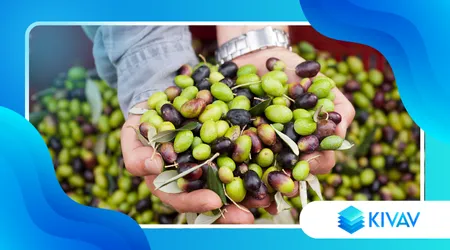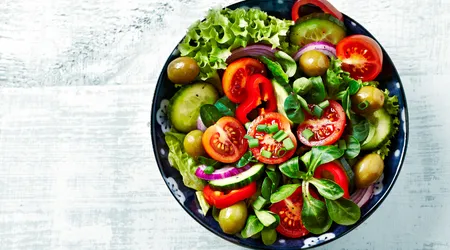Taggiasca olives: why they're so popular and where to use them

Taggiasca olives, Liguria's small black pearls, embody the essence of Mediterranean cuisine. Their history dates back to the Middle Ages, when Benedictine monks brought them to Taggia, in the province of Imperia.
Announcements
Since then, these olives have conquered palates around the world, thanks to their unique, sweet and aromatic flavor, and the versatility that makes them protagonists on the table.
But what makes the Taggiasca olives So special? This article explores their uniqueness, their organoleptic qualities, their culinary uses, and their role in Ligurian tradition, offering practical tips for enhancing them.
Get ready to discover an ingredient that is much more than a simple accompaniment: it is a symbol of culture, territory, and passion.
The Taggiasca olives they are not just a gastronomic product, but a story of resilience and tradition.
Announcements
Grown on terraces overlooking the sea, these olives thrive in a unique microclimate, between sea breezes and alpine shelter.
Their popularity has grown exponentially, so much so that in 2025 the application for registration as a PGI product was published in the Official Journal of the EU, a step towards the international protection of their quality.
This recognition underlines the importance of a fruit that combines taste, history and sustainability, making it Taggiasca olives a timeless excellence.
The Fascinating History of Taggiasca Olives
Imagine a Benedictine monk, in the 7th century, planting an olive tree in Taggia. This is where the history of the Taggiasca olives.
Brought from Provence, these cultivars adapt perfectly to western Liguria. Their name comes from Taggia, a village nestled between the hills and the sea.
Over time, Taggiasca olive trees have transformed the Ligurian landscape. Hand-built dry stone walls support terraces where the trees thrive.
This centuries-old work is a living legacy, still visible today.
++ Modena DOP balsamic vinegar: how to recognize the authentic one
Cultivation is concentrated primarily in the province of Imperia. Here, the mild microclimate favors late ripening, in January, which gives it an unmistakable flavor.
The Taggiasca olives they are a symbol of tradition and peasant hard work.
In the Middle Ages, monks perfected the cultivar, selecting resistant and productive plants.
This ancient knowledge is still passed down in local mills, where quality is an absolute priority.
Today, the Taggiasca olives They are appreciated worldwide, but only those from Imperia boast the DOP designation. This label guarantees authenticity and a connection to the Ligurian region.

Unique Features: Why Are They So Special?
Small, fleshy, black-purple in colour: the Taggiasca olives They win you over at first bite. Their firm flesh and fruity flavor make them unique. But what really sets them apart?
They contain up to 26% of oil, an exceptional figure for such small olives. This makes them perfect both for eating and for extra virgin olive oil. The low acidity (under 0.5%) ensures lightness.
The flavor is a balance of sweetness and aromatic notes, with hints of almond and pine nut. This complexity makes them versatile, suitable for both simple and refined dishes.
Compared to other cultivars, they produce less: only 20 quintals per hectare compared to 60-100 for other varieties. This rarity increases their value and prestige.
Their elliptical-cylindrical shape and firm texture make them ideal for canning. Whether pickled in brine or oil, they retain their organoleptic qualities intact.
See also: Parma Ham DOP: history, production, and recommended pairings
Culinary Uses: Versatility Without Boundaries
The Taggiasca olives They're like an artist's paintbrush: they transform every dish into a masterpiece. In Liguria, they're the star of traditional recipes like Ligurian-style rabbit.
Try making a summer bruschetta: toasted bread, fresh cherry tomatoes, Taggiasca olives Pitted and drizzled with extra virgin olive oil, the result is an explosion of Mediterranean flavors.
For a quick first course, a Taggiasca olive pâté elevates a plate of spaghetti. Mix with garlic, oil, and parsley for a simple yet unforgettable sauce.
Not just savory dishes: Taggiasco olive oil is also used in desserts. A "stroscia" cake with extra virgin olive oil and lemon is an example of Ligurian creativity.
A seafood salad with Taggiasca olives, shrimp, and arugula are perfect for a light lunch. Their sweetness balances the intense flavors of the fish.
Taggiasco Extra Virgin Olive Oil: A Liquid Treasure
The oil of the Taggiasca olives It's a world-class delicacy. Deep yellow, with a fruity aroma, it's the secret ingredient in Genoese pesto. But there's more.
According to the Riviera Ligure DOP Olive Oil Protection Consortium, 1.2 million liters of Taggiasco DOP olive oil were produced in 2024, a record high. This figure reflects growing global demand.
Use it raw on fish or meat tartare. Its low acidity and almond aftertaste enhance the flavors without overpowering them.
In pastry making, Taggiasca olive oil adds softness to doughs like "stroscia." It's a healthy and flavorful alternative to butter.
Store the oil in a cool, dark place to preserve its properties. A good Taggiasco oil is an investment for the palate.
Tradition and Innovation: The Future of Taggiasca Olives

Why did such a small olive conquer the world? Taggiasca olives They combine tradition and innovation. The 2025 PGI application is proof of this.
Ligurian producers are experimenting with new sustainable cultivation techniques. For example, the use of fine-mesh nets reduces waste during harvest.
Olives are transformed into innovative products, such as tapenades and spreads. These innovations delight even the most modern palates.
Mills, such as the renowned Frantoio Benza, combine ancient methods with advanced technologies, ensuring quality without sacrificing authenticity.
Sustainability is at the core: many companies use plastic-free packaging. This commitment makes the Taggiasca olives a symbol of responsible agriculture.
Table: Comparison between Taggiasca Olives and Other Cultivars
| Characteristic | Taggiasca Olives | Leccino Olives | Kalamata Olives |
|---|---|---|---|
| Origin | Liguria, Italy | Tuscany, Italy | Greece |
| Oil content | 25-26% | 20-22% | 22-24% |
| Oil acidity | <0.5% | <0.8% | <0.7% |
| Taste | Sweet, fruity | Herbal | Intense, salty |
| Main use | Table, oil | Oil | Table |
Practical Tips for Choosing and Storing
You choose Taggiasca olives Pickled or preserved in oil from certified DOP producers. Check the label to ensure Ligurian origin and quality.
Store them in a cool, dry place. Once opened, keep them immersed in oil to preserve their flavor and texture.
For an original aperitif, prepare a mix of Taggiasca olives, capers, and sun-dried tomatoes. Serve with a glass of Ligurian Pigato.
Avoid products that are too cheap: the quality of the Taggiasca olives It requires care and attention, which is reflected in the price.
Experiment with Taggiasca olive pâté on liver crostini. The sweetness of the olives balances the intense flavor of the liver.
Conclusion: A Heritage to be Enhanced
The Taggiasca olives They're not just an ingredient, but a journey through Ligurian culture. Their versatility, from pâté to oil, makes them indispensable in the kitchen.
Like a golden thread running through history, they connect the peasant past to the gastronomic future.
In 2025, with the possible PGI recognition, their value will grow further, protecting a unique heritage.
Experiment, taste, discover: a Taggiasca olive can transform a simple dish into an extraordinary experience. What will your next recipe be with this Ligurian treasure?
Frequently Asked Questions
1. What is the difference between DOP and non-DOP Taggiasca olives?
Taggiasca DOP olives guarantee Ligurian origin and high production standards, while non-DOP olives may come from other regions.
2. Can I use Taggiasco oil for frying?
Yes, but it's best used raw to preserve its organoleptic properties. For frying, choose oils with a higher smoke point.
3. Where can I buy authentic Taggiasca olives?
Look for certified Ligurian mills or specialized shops. Online, sites like Nuova Bottega Italia offer guaranteed products.
4. Are Taggiasca olives suitable for specific diets?
Yes, they are rich in monounsaturated fats and antioxidants, ideal for the Mediterranean diet, but watch out for the salt in pickled versions.
